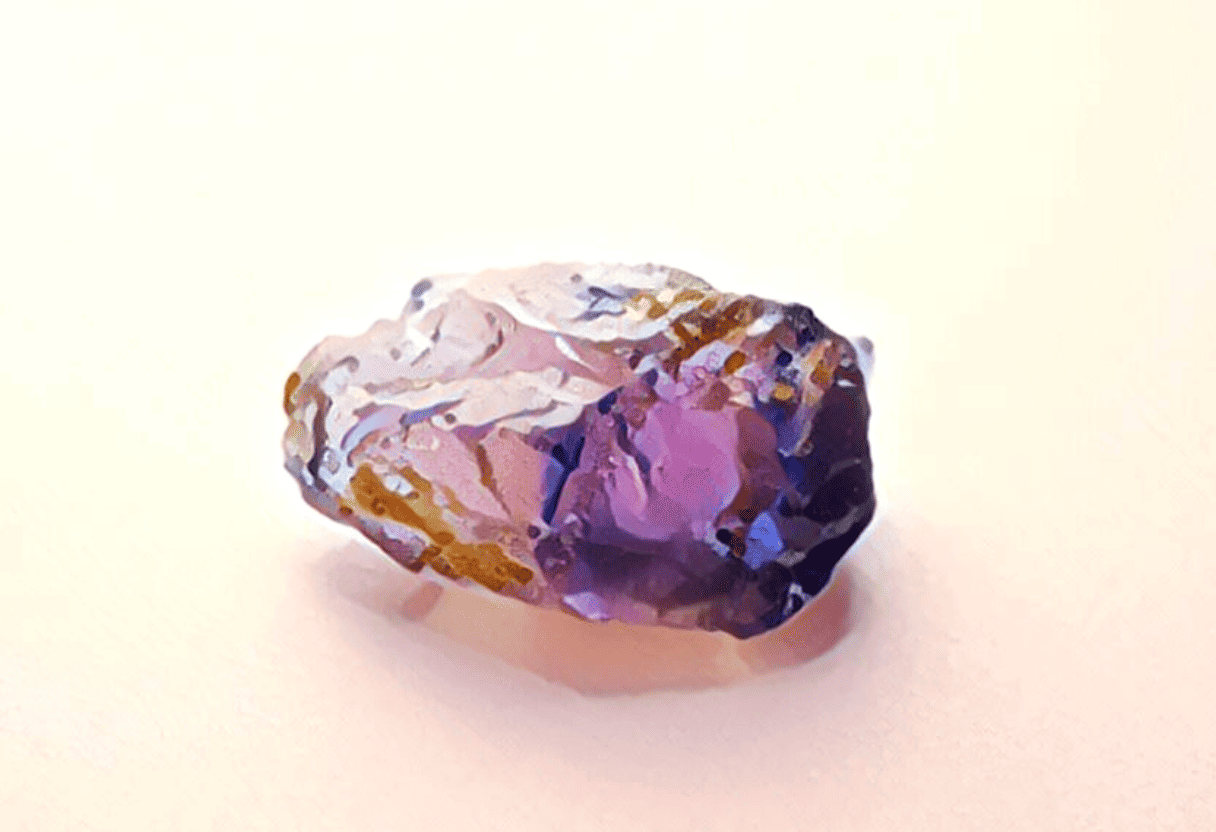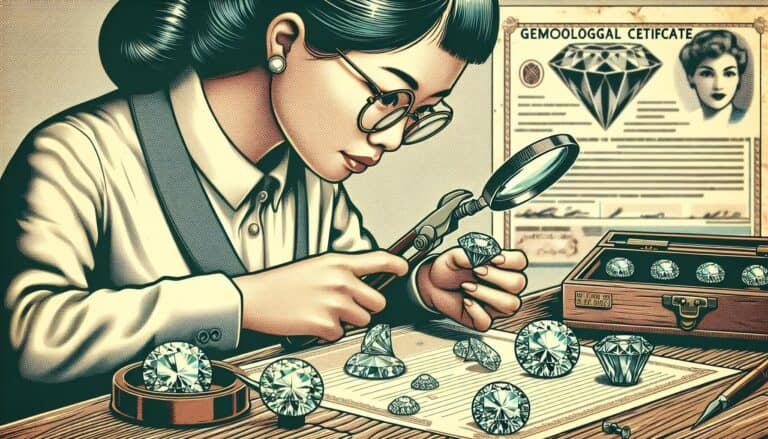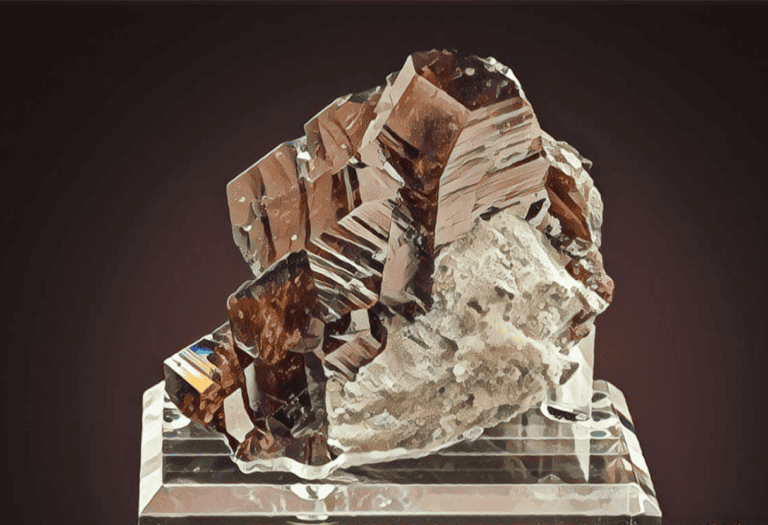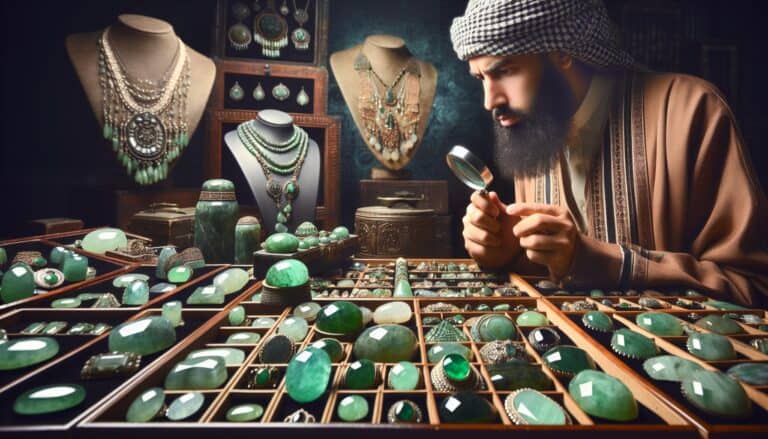I’ve always been fascinated by gemstones and their hidden worth, which often lies beyond their shimmering beauty.
Iolite, with its mesmerizing hues of violet and blue, is no exception. It’s a stone that’s not only steeped in history but also has a value that might surprise you.
Determining the worth of iolite involves more than just admiring its unique color; it’s about understanding the factors that influence its value. From clarity to carat weight, I’ll dive into what makes this gemstone a treasure in the jewelry world.
As a collector or enthusiast, knowing the worth of iolite is crucial, whether you’re looking to purchase or simply appreciate this lesser-known gem.
So, let’s explore the intricacies that impact iolite’s price and learn why this stone might be a smart addition to your collection.
Iolite’s value is influenced by clarity, color, and carat weight. High-quality iolite features deep blue or violet hues, clear visibility, and larger sizes command higher prices. Rarity, especially in large, vivid, and clear stones, significantly impacts its market value, making iolite an attractive choice for collectors and investors.
The Beauty of Iolite
When pondering the true value of iolite, its aesthetic charm cannot be overstated. Iolite gemstones possess a unique property called pleochroism, meaning they showcase different colors when viewed from various angles. This remarkable feature can exhibit shades of sapphire blue, violet and a light grey-yellow, depending on the direction of light. This dazzling play of color is what sets iolite apart and captivates gem enthusiasts worldwide.
Pleochroism lends each stone a distinct character, with no two iolite gems looking exactly the same. What’s more, I find that the rich purples and blues of iolite often draw comparisons to the deeper hues found in more expensive stones, such as tanzanite and sapphire. For those looking for a gemstone that mirrors the majesty of the ocean depths or the twilight sky, iolite makes a striking, yet affordable alternative.
Beyond its mesmerizing colors, iolite is also celebrated for its transparency and brilliance. I’ve noticed that high-quality iolite should be relatively free of inclusions, which can otherwise diminish its clarity and value. The rarity of inclusions in these stones means they can achieve a glass-like luster that’s truly alluring. When cut skillfully, an iolite’s brilliance is enhanced, bringing forth a sparkling appearance not unlike that of more recognized gemstones.
The light to medium tones of iolite also make it a versatile choice for various types of jewelry. From elegant evening pieces to more casual daywear, iolite can complement a wide array of styles. It’s a favorite among jewelry designers who value both its beauty and the creative possibilities it offers.
For anyone looking to acquire a piece of this enthralling stone, understanding the facets that contribute to its beauty helps appreciate why iolite is held in such regard. Although price is a vital component of a gemstone’s worth, the allure and distinctive qualities of iolite are what truly encapsulate its value.
A Brief History of Iolite
Iolite, also known as “water sapphire,” has a storied past that intertwines with the annals of human history. This gemstone’s name is derived from the Greek word ‘ios’, meaning violet, and it’s been appreciated for centuries for its deep blue hues. I’m often fascinated by the fact that Vikings used iolite as a polarizing filter to navigate their oceanic expeditions. Navigators would hold iolite slices up to the sky to determine the exact position of the sun, helping them to safely voyage across the seas.
In more recent history, iolite was rediscovered in Wyoming in the late 20th century, and since then, it’s gained momentum in the gemstone market. I’ve observed that although it’s relatively new in terms of commercial use, its affordability and resemblance to more expensive sapphires have made it quite popular.
Ancient lore also prides iolite with numerous spiritual and healing properties. Many believe that this gem can guide one to inner self-knowledge, and it’s often linked to the third eye chakra. Although these beliefs remain unproven by science, they add another layer of appeal to this already captivating gemstone.
Remarkably, fine-quality iolite has been found in a variety of locations around the world, including India, Sri Lanka, Mozambique, Zimbabwe, and Brazil. Each of these locales contributes different shades and qualities to the iolite market, diversifying its appeal.
Even though transparent, gem-quality iolite is rare, recent finds, particularly in Madagascar and Myanmar, have introduced a greater volume of this stone to the gem market. I find that with each new discovery, excitement about iolite’s potential grows among collectors and jewelers alike. The constant unveiling of iolite in new locales keeps the history of this gemstone evolving, ensuring there’s always something new to discover about its worth and allure.
Factors Affecting the Value of Iolite
When delving into the worth of iolite, it’s essential to understand certain factors that significantly influence its value. The pricing of this gemstone isn’t uniform and can vary based on a variety of aspects.
Color and Pleochroism
The color of iolite is a critical determinant of its price. Deep blue to violet hues are especially coveted, similar to the finest sapphires. Remember, iolite’s unique pleochroic nature means the gem can display different colors from different angles – a feature that’s celebrated in high-quality stones. More saturated colors usually demand higher prices, while lighter shades may be more affordable but still visually appealing.
Clarity and Cut
Clarity is next on the list, with iolite specimens that have fewer inclusions being more valuable. A clear, inclusion-free iolite is a rarity and, hence, a treasure in the gemstone market. The cut of the stone also plays a significant role. A well-executed cut not only enhances the stone’s pleochroism but also its brilliance, making it more desirable. Masterful cutting can even make a lower-grade gem appear more valuable.
Carat Weight
As with many gemstones, the size does matter. Larger carat weights often result in higher prices, but there’s a catch – it’s not just about size. The quality needs to be up to par for the carat weight to have a significant impact on value.
Origin and Treatment
Lastly, the origin of iolite can affect its worth. Stones from renowned deposits might fetch higher sums. Additionally, iolite is not commonly treated, which means a natural, untreated stone will maintain its value better over time.
The interplay between these factors creates a complex valuation landscape for iolite. Each gem must be evaluated on these grounds to ascertain its true market worth. Jewelers and collectors alike must consider the nuanced interplay of these characteristics to gauge the value of an iolite stone accurately.
The Importance of Clarity and Color in Iolite
When appraising iolite’s value, clarity and color are two critical parameters I always focus on. These gemstones with few to no inclusions are considered the most desirable. Clarity is a deal-breaker as it can significantly affect a gemstone’s appearance and subsequently its market price.
Typically, iolite clarity is graded similarly to diamonds, though the grading terms may vary. It’s crucial to realize that flawless pieces are extraordinarily rare and priced accordingly. Most gemstones will exhibit some level of inclusion, but the key for buyers is to look for stones where these are not visible to the naked eye.
As for color, it’s all about the depth and saturation. Iolite’s most sough-after hue is a vibrant violet-blue. Consistency of color throughout the stone without zoning is another factor that ramps up its worth. The phenomenon of pleochroism I mentioned earlier comes into play, allowing discerning eyes to see different colors or depths from various angles.
Understanding the spectrum of quality in iolite’s color can be tricky. Quality grading isn’t standardized, but gem enthusiasts like me tend to categorize color into ‘top’, ‘good’, ‘commercial’, and ‘low’ categories. Here’s how they typically break down:
- Top: Deep-blue or violet, reminiscent of high-grade sapphire.
- Good: Slighter lighter blue but still with rich saturation.
- Commercial: Noticeable color that’s often found in mass-market jewelry.
- Low: Fainter color, typically with grayish tones.
Investing in a piece of jewelry or a loose gemstone with the right mix of clarity and color means you’re likely to enjoy a clarity that adds to the stone’s sparkling appeal and a color that catches the eye. It’s not just aesthetics; these characteristics hold the key to the gem’s value retention over time. When you’re evaluating iolite, pay attention to these two factors, as they’ll guide you towards making an informed purchase or valuation.
Understanding Carat Weight in Iolite
When it comes to assessing the value of iolite gemstones, carat weight plays a pivotal role alongside clarity and color. The term ‘carat’ refers to a unit of weight traditionally used for gemstones, with one carat equalling 0.2 grams. Why’s carat weight so vital? It often significantly impacts price, as larger stones are rarer and therefore generally more valuable.
Larger carat weights can amplify the natural beauty of iolite, allowing for a more substantial display of its pleochroism – the stone’s ability to exhibit several colors depending on the angle of the light. However, it’s crucial to remember that a high carat weight does not automatically warrant a higher value unless accompanied by high clarity and the coveted vivid violet-blue hue.
Here’s a quick guide to understanding how carat weight impacts the price of iolite:
- Small to medium iolites, ranging from 0.1 to 1 carat, are relatively abundant and affordable.
- As the size increases, particularly stones over 1 carat, prices tend to rise exponentially.
- Iolites exceeding 5 carats are considered quite large for this gem type and can fetch high prices due to their rarity.
I’ve observed that buyers often assume that a larger size always equates to a better investment. However, it’s essential to consider that iolite’s value is also conditional on its ability to be fashioned into a desirable shape and show optimal brilliance. An ideal iolite will strike a balance between carat weight and aesthetic qualities, exuding a harmonious presentation of size, color, and clarity. Keep in mind that optimum carat size for iolite typically ranges from 1 to 5 carats for most jewelry settings, offering a perfect blend of visible quality and affordability.
Is Iolite a Good Investment?
When considering precious stones for investment, iolite is often overlooked in favor of more mainstream gems like rubies, sapphires, or diamonds. However, savvy investors and collectors know that iolite can be a wise investment under the right conditions. Because iolite isn’t as well-known, it usually comes with a more attractive price point, particularly for those larger, high-quality pieces that are much rarer.
Investing in iolite is all about timing and knowledge. You’ll want to purchase when the market is low, and sell when it starts to peak. Keep an eye on trends within the gemstone market and watch for moments when iolite begins to gain more popularity. This could indicate that the market is on an upswing, which is the perfect time to sell.
Let’s talk specifics:
- Rarity: Iolite’s rarity, particularly in larger sizes and high clarity, can drive up its value over time. Pieces over 5 carats that still maintain intense color and clarity could become significantly more valuable.
- Market Demand: Increasing interest in unique and affordable gemstones may lead to a higher demand for iolite, potentially raising its market price.
- Durability: With a Mohs hardness rating of 7-7.5, iolite is durable enough for most types of jewelry, which makes it a practical choice for consumers, thus sustaining its marketability.
It’s important to note that iolite’s worth in the investment sphere is highly contingent on staying informed and understanding the nuances of the market. Building relationships with reputable dealers and having a keen eye for gems with investment potential is key. Additionally, storing and caring for your investment-grade iolite is crucial, as the gemstone must remain in excellent condition to retain its value.
I also can’t stress enough the importance of certification from recognized gemological institutes, which assures the authenticity and quality of your investment gemstone. Investing in iolite might not carry the immediate prestige of the ‘Big Four’ (diamonds, rubies, sapphires, and emeralds), but for those with a vision for its hidden potential, it could be a sparkling addition to an investment portfolio.
Conclusion: Buying & Selling Lolite
Iolite’s charm lies in its affordability and the potential for value appreciation. As a savvy investor or jewelry enthusiast, I’ve learned that its worth hinges on several key factors, with the promise of rarity and increasing demand enhancing its appeal.
It’s clear that iolite offers a blend of beauty and practicality, making it a smart addition to any collection. For those ready to delve into the world of colored gemstones, iolite stands out as a gem with both character and investment allure.
Remember, success with iolite investments is about knowledge and strategic purchasing. Embracing its unique qualities could yield sparkling returns.







